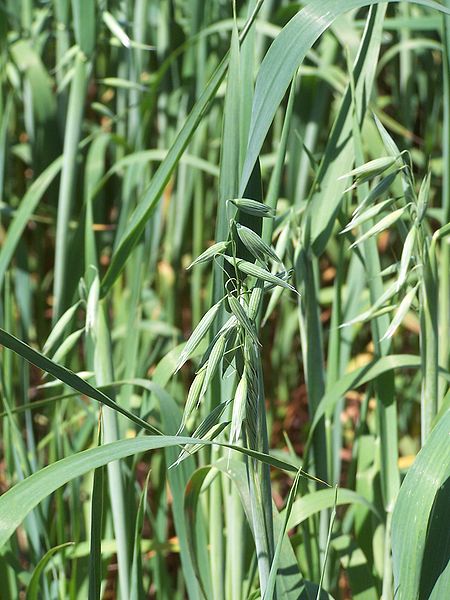| |
Oatstraw (Avena sativa)
 |
Oatstraw is rich in calcium and synergistic minerals and vitamins needed for building bones. Its steroidal saponins nourish the pancreas, liver and adrenals and help stabilize blood sugar levels. It reduces cholesterol and improves circulatory functioning. It is a nervine, that nourishes strong nerves, helps people deal with stress (Vitamin B complex), maintains restful sleep patterns and reduces the frequency and duration of headaches. It eases bladder spasms, incontinence, uterine pain and vaginal dryness. It stimulates sexual response.
Oats have been eaten since prehistoric times, and this use is described by the genus name, Avena, which is said to mean"nourishing." Sativa means "cultivated," and Oat Straw is often planted to prevent soil erosion, and is widely distributed as a cereal crop. The fruit and straw are gathered at harvest time, typically in August. The stalks are cut and bound together and then left upright to dry, and the crushed, dry stalks become the straw. In the past, this plant was used in India to help opium, morphine and cigarette addicts withdraw from their habits. Highly nutritive and supportive of the nervous system, Oat Straw helps build healthy bones, skin, hair and nails. Oat Straw is not a bona fide aphrodisiac, but it does nourish the nerves, which is thought to make tactile sensations more pleasurable. Oat Straw is one of the best remedies for "feeding" the central nervous system, especially when under stress. It is considered a specific in cases of nervous debility and exhaustion, especially when associated with depression. Oat Straw may be used with most of the other herbal nervines, both relaxant and stimulatory, to strengthen the nervous system and is also used in general debility. The high levels of silicon in the straw explains its use as a remedy for skin conditions, especially for external applications. Oat Straw is often used as a bath herb to soften skin and help with eczema and neuralgia. The husks have been used historically to stuff pillows and bedding, which is said to have a sedative effect and help for those with rheumatism. Oats have also been used extensively for culinary purposes. The Oat grain from the ripened seed is high in protein and helps to increase stamina; the Oat bran (fiber) has been shown to lower cholesterol levels; and the straw is high in silica, which is good for skin, hair and nails. The primary chemical constituents of Oat Straw includes saponins, flavonoids, starch, alkaloids (trigonelline, avenine), steroids, calcium, iron, B-vitamins, lysine and methionine. The fruits (seeds) contain alkaloids, such as gramine, as well as saponins, such as avenacosides A and B. The seeds are also rich in iron, manganese and zinc. Oat Straw alkaloids are believed to account for its relaxing action.
Disclaimer: The
information presented herein is intended for educational purposes only. These
statements have not been evaluated by the FDA and are not intended to diagnose,
cure, treat or prevent disease. Individual results may vary, and before using
any supplements, it is always advisable to consult with your own health care
provider. |
|


















